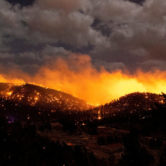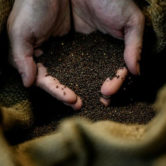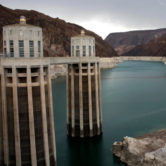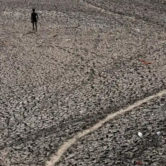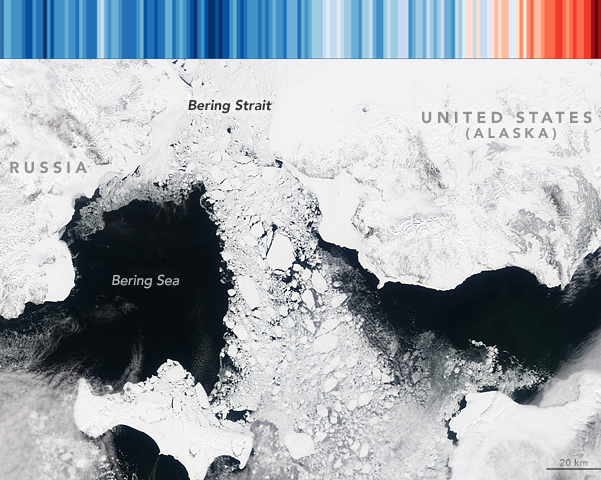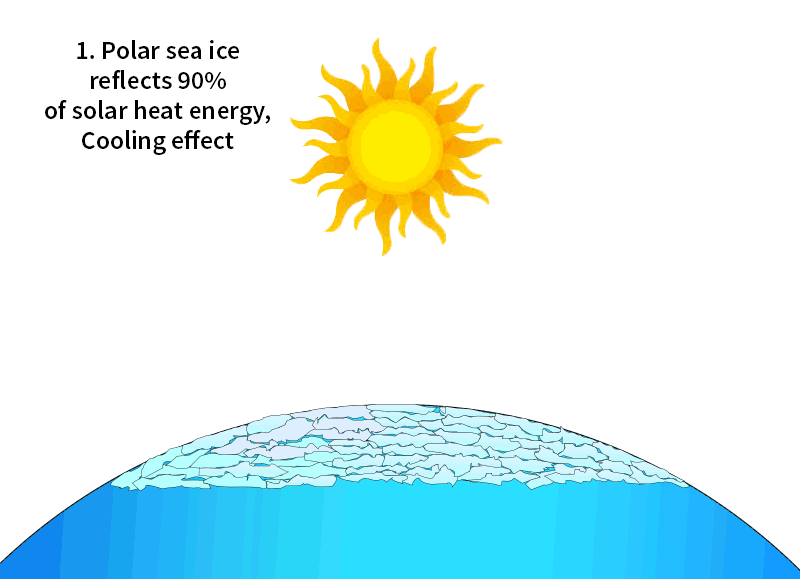Louisiana: New Climate Refugees As Waters Close In
Only 15 miles south of New Orleans, the waters around Grand Island, Barataria, Crown Pointe, and Jean Lafitte are continuing to rise, threatening long time residents of the bayou area. About a football field worth of wetland disappears every two hours.
South Africa: Over 400 dead in “unprecedented” flooding:
Horrendous rains have brought lethal flooding and landslides that have displaced thousands the Durban, South Africa region. The humanitarian disaster, as always, is magnified by malfeasance on the part of the powers what is. More than a decade ago, poor families were relocated away from a new soccer stadium and dumped in a flood prone area, where they remain. Damages are currently estimated at $684 million and rising. The death toll will climb.
Bering Sea: Warming Ocean Threatens Crab Fisheries
Add Alaskan snow crab to the growing list of marine animals threatened by rapidly changing conditions on the ground, or, in this case, in the Bering Sea. Extreme ocean warming in the area around the Pribilof Islands (between Siberia and Alaska) has crashed the population down nearly 90% from 2021 levels. Read the Article.
Siberia/Alaska: Methane / Permafrost Thaw Reshapes the Arctic
There is a lot of CH4 trapped beneath the surface of the planet, particularly under the permafrost in Siberia, Alaska and other Arctic regions. As the permafrost thaws, the gases trapped below it spew into the atmosphere, creating a climate feedback cycle with results that are observable in something close to real time. Visit the Page.
The Poles: Insane Temps At Both Poles
Late winter in the Arctic temperatures were about 70°F above the normal average at some measurement stations. Some near North Pole stations reported the beginning of melt. New heat records were also established in Antarctica with temperatures of over 50°F above the normal average in March. Visit the Page.
Great Barrier Reef: New Mass Bleaching Event
Another widespread die-off at the World Heritage site off the northern coast of Australia marks the sixth such catastrophe since 1998. This ongoing environmental disaster is driven by warming oceans and pollution. The most recent aerial survey shows almost no reefs across a 1,200km stretch unaffected by the elevated water temperatures. See Australia’s New Normal video.
Great Salt Lake: Toxic Dust Events Loom In Utah
The inland sea that forms the iconic core of Utah’s Latter Day culture is in danger of disappearing as it reaches its lowest level. About half of the original lakebed area is now dry land In the process, thousands of square miles of dry lake bed is exposed, laying open vast expanses of toxic dust.
India: Record Deadly Heat Begins The Year
Bordeaux: Wine Regions Scramble As Heat Threatens Grapes
Violent weather events—frost, hail, storms, rain at harvest, dry summers—have become more frequent. Slow to acknowledge the creeping disaster, French wine authorities have authorized planting of new varieties.
Iceland: Land Mass Rising As Huge Glaciers Melt Away
Coastal water levels are dropping even as melting land glaciers dump tons of fresh water into the North Atlantic. As the immense weight of Iceland’s glacial ice mass disappears into the North Atlantic, the land beneath it is “bouncing back”, more or less springing up as the burden is removed. So seas seem to be dropping lower on the coasts of Iceland even though water level is relative to the land mass. Read the Article.
Australia: The Relentless Onslaught of the New Normal
The reality of calamitous sea level rise smashes into Sidney as tidal onslaught tears boats their moorings. Bondi and Clovelly beach clubs and hotels took a pounding from huge wind driven swells. The second major cleanup follows a major flooding event only three weeks ago. It’s all part of Australia’s New Normal (see our video).
Syria: Lethal Drought Continues Into Third Decade
The root cause of the so war in Syria was an unrelenting drought that brought farmers to their knees. It moves into its third decade as the worst in the Middle East for at least 1,000 years. Conditions have worsened in the past two years: Herds have been culled and crops are generally devastated. The iconic Khabur river is at record lows..
Argentina: Wildfires & Serial Heat Waves
After a scorching heatwave, Argentina is suffering another round of raging wildfires that torched forests and farms across its northern region. Authorities estimate early losses at a quarter billion dollars with 2 million acres torched. The region has been experiencing record heat this year, baking in unprecedented temperatures up to 113°F.
Kenya: Water Shortages, Dead Livestock and Ruined Harvests as Desertification Moves In
Kenya and the Horn of Africa are in the third year of failed rainy seasons as the desert takes back the land. 5.5 million children in the region are threatened by acute malnutrition. Millions of head of livestock have died of malnutrition and in Kenya, Forecasts indicate that below average rainfall will continue into the foreseeable future.
Brazil: Mass Rainforest Ecocide
The far right Brazilian administration has accelerated the plundering of indigenous lands; what environmental regulations remain are essentially gone. Many scientists now believe the critical forest carbon sink has crossed the final tipping point in terms of climate effects. When forests are cleared, another climate feedback cycle is triggered.
Sahel: Sahara Moving South To Claim Central Africa

